Facebook Live Link: https://www.facebook.com/LathamSeeds/videos/10156461584057138/
-
Latham Hi‑Tech Seeds
FB Live: Volunteer Corn

-
Latham Hi‑Tech Seeds
FB Live: Volunteer Corn

Facebook Live Link: https://www.facebook.com/LathamSeeds/videos/10156461584057138/
-
Latham Hi‑Tech Seeds
Podcast: Weed Resistance

This week on our Ask the Agronomist podcast, Phil Long discusses the heavy topic of resistant weeds. Tune in a grab a bit on information on resistant weeds overall, as well as in-field action items for the years ahead.
Thanks for tuning in and find us back here next week!
-
Latham Hi‑Tech Seeds
Weed Management, PART II: The Hows and Whys of Herbicide Resistance
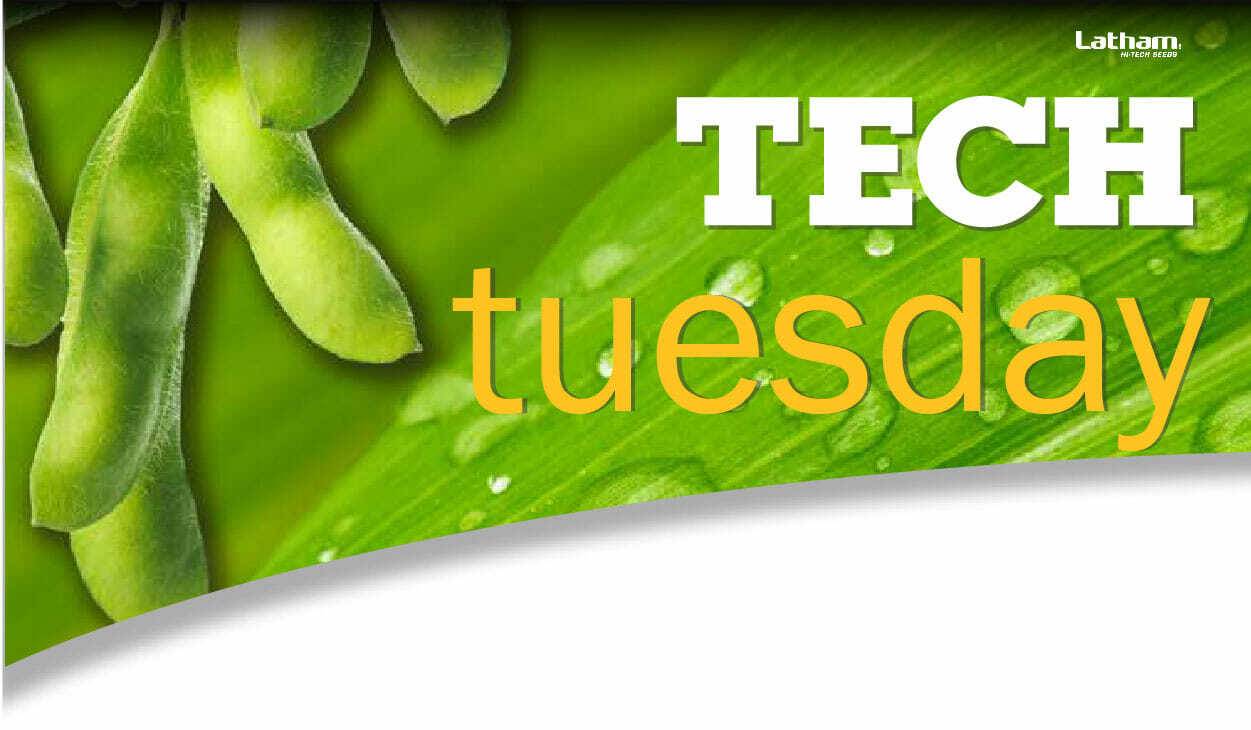
This is the second article in a three-part series, focusing on how to deal with herbicide-resistant weeds. Didn’t catch the first article in the series? Click here to read Weed Management, PART I: Learn from the Past, Look to the Future.
Plants that develop resistance to herbicides are simply following the age-old process of “survival of the fittest.” This process acts on phenotypes, or the plants in this case, but the unit of inheritance is the gene.
Different versions of the same gene are called alleles. Individuals usually have two different alleles for each gene. An example of this in humans is blood type, where each parent contributes a different allele to the offspring.
Therefore, herbicide resistance can be defined as “an increase in frequency of resistant alleles in a plant population after exposure to herbicide selection.” There are three main sources of these resistant alleles: new mutations, immigration and standing genetic variation.
New mutations are rare and impossible to predict, so there’s really nothing we can do about those. Immigration occurs when a population is found in new territory, such as when Palmer Amaranth invades an area. Immigration also is considered to be fairly rare unless it’s introduced through an outside source.
The most common source of resistant alleles is from standing genetic variation. We’ve all seen studies of how this can happen. Herbicide is sprayed on a field where there is a high concentration of weeds. Most of those weeds die but a few survive. If not controlled with another method or herbicide, those few surviving weeds will produce seeds that will germinate the following year. If the same herbicide is used that next year, the population can increase dramatically. After multiple years of this practice, a tremendous weed problem exists.
When waterhemp became a serious problem in Illinois, Dr. Aaron Hager and his colleagues conducted a multi-year study on what factors contributed most to the occurrence of herbicide-resistant weeds. They took into consideration a wide range of factors within four main categories: Management, Weeds Present, Soil Properties and Landscape.
Three major findings resulted from the University of Illinois study:
- How close you are to a neighbor who has resistant weeds is not a good predictor of when or if you would have them.
- Overall management factors have the most impact on preventing weed resistance: How many different herbicides are used; How often pre-emergence herbicides are used; Crop rotation, etc.
- Herbicide rotation is important, but mixing herbicides with different sites of action makes weed resistance 83 times less likely to occur.
On the first TECH Tuesday of next month, I’ll further discuss the concept of managing weed resistance by rotating herbicide traits and mixing different sites of action.
-
Latham Hi‑Tech Seeds
Weed Management, PART I: Learn from the Past, Look to the Future

My college professor in Principles of Plant Physiology said it quite simply, “A weed is a plant that is out of place.” I never thought to ask him just where he felt was the proper place for Waterhemp… or Kochia… or Palmer Amaranth.
Weeds have been a problem since the dawn of mankind. After Adam sinned in the Garden of Eden, God “cursed the ground” and told him that “thorns and thistles would be produced” because of what he did. (Genesis 3: 17-19)
Not only were thorns and thistles (i.e. weeds) produced, but they multiply rapidly. Did you know that Waterhemp produces as many as 1.5 times more seeds than most other pigweed species? Waterhemp plants generally produce about 250,000 seeds per plant. Some Waterhemp plants can produce 1 million or more seeds under optimal conditions in noncompetitive environments.
It’s no wonder weed management is such a challenge! During my presentation at the Latham® Dealer Kickoff meeting last month in Branson, I mentioned that a 90% weed kill rate used to be acceptable. Weed scientists today, however, say we should shoot for a 100% weed kill to prevent resistance.
Resistance to herbicides results when weeds get sprayed but live through the application. This might happen because of improper rates, improper timing or just due to natural selection. That’s why we must learn from the past to ensure success in the future.
Herbicides were introduced in the U.S. after WWII with the marketing of 2,4-D. Atrazine was first registered for use in 1959, followed by a succession of products designed to control weeds.
Farmers in the 1970s and ‘80s didn’t worry about weeds becoming resistant to herbicides being used because all they had to do was visit their local chemical retailer where they’d get the newest and greatest product to try.
The first herbicide in the U.S. that weeds developed resistance to was Atrazine in the early 70s. The alarm, however, didn’t really get sounded until resistance to Pursuit® and Scepter® occurred. These ALS herbicides were introduced in the mid-80s and weed resistance showed up very quickly.
When Roundup® (glyphosate)-tolerant soybeans were introduced in 1996, farmers believed they finally had the ultimate answer to weed control. Not only did this new system work, but it was very simple to use.
Roundup made good weed managers out of bad. Weeds too big before the field was sprayed? No problem… just add a little more! Don’t bother with any of those old herbicides… all you need is Roundup!
Sound familiar? We were assured weeds would NEVER develop resistance to glyphosate, but it happened. To make matters worse, the “endless supply” of new herbicide products stopped. The last new herbicide group of HPPD inhibitors was discovered in 1986.
There are 29 groups of herbicides, each with its own unique site of action, according to the Weed Science Society of America (WSSA). At the latest count, weeds have developed resistance to all but three of them.
It’s been well documented that weed resistance is a growing problem. In next month’s article, I’ll talk in more detail how weeds develop resistance to herbicides. The last article in this series will cover what (if anything) can be done.
This is the first article in a three-part series, focusing on how to deal with herbicide-resistant weeds. Click here to read PART II: The Hows and Whys of Herbicide Resistance.
-
Latham Hi‑Tech Seeds
Podcast: Herbicide Damage

Welcome back to our Ask the Agronomist podcast! This week, Phil discusses herbicide damage and helpful indicating symptoms. Tune in for a 10-minute from the field agronomy update!
Submit your #crop17 growing questions to us on either Facebook, Twitter, Snapchat or Instagram. Thanks for tuning in!
-
Latham Hi‑Tech Seeds
Tips for Controlling Palmer Amaranth Across the Upper Midwest
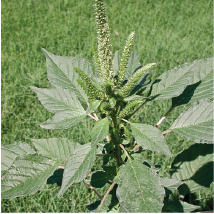
 Palmer Amaranth, called Palmer Pigweed, has been confirmed in 48 of Iowa’s 99 counties. When Bob Hartzler of Iowa State University Extension made this frightening announcement during a recent crop meeting that I attended in Ames, the atmosphere in the room changed — and for good reason.
Palmer Amaranth, called Palmer Pigweed, has been confirmed in 48 of Iowa’s 99 counties. When Bob Hartzler of Iowa State University Extension made this frightening announcement during a recent crop meeting that I attended in Ames, the atmosphere in the room changed — and for good reason.To say this weed is “aggressive” is an understatement. To win the battle, farmers must employ an aggressive weed management system. It’s important to start with a clean seedbed, and then integrate more than one herbicide to prevent weed escapes by:
- Using full rates of a pre-emergence residual herbicide that kills Palmer Amaranth.
- Applying post-emergence herbicide before pigweeds are 3 inches tall.
- Tank mixing another residual herbicide to extend control.
- Applying a second post-emerge application if needed.
- Removing surviving plants by hand or mechanically.
Every attempt must be made to completely eradicate it from fields, as Palmer Amaranth is truly “waterhemp on steroids.” Palmer is closely related to Common Waterhemp but is much more invasive. It can get so bad that literally entire fields must be tilled up to prevent further infestations.
Both Palmar Amaranth and common Waterhemp are dioecious, meaning there are male and female plants, as opposed to most other pigweeds species that have male and female parts on the same plant. Many scientists believe this characteristic gives these weeds an advantage to developing herbicide resistance.
Both Palmer Amaranth and Waterhemp have become resistant to numerous herbicide groups. Many populations are resistant to multiple groups — as many as five in one population has been documented in Illinois!
Pollen spreading within fields and to neighboring fields spreads that resistance, so farmers must be even more diligent to control weeds in both corn and soybeans. Diversity of weed control tactics key. We won’t be able to rely on just Roundup Ready 2 Xtend®, Enlist™ or Balance™ GT — nor any other future trait system.
Take some time now to attend some weed control meetings in your area, and learn how to identify and manage this potentially devastating pest.
-
Latham Hi‑Tech Seeds
Farmers Have More Options to Fight Weeds

Farmers looking for new tools to fight weed resistance across Latham Country now have another option to choose from. XtendiMax is a newly approved herbicide that can be worked into a rotation to help farmers fight weed year after year.
Just a few short months ago, we received news that Roundup Ready 2 Xtend® Soybean technology was approved for the 2017 planting season and necessary export channels. We are happy to announce that XtendiMax™ Herbicide with VaporGrip™ Technology is now approved by the EPA for in-crop use.
XtendiMax™ Herbicide with VaporGrip™ Technology can be described as a low volatile formulation of dicamba. This new tool assists in the fight against weeds, enabling the in-crop use of approved dicamba. However, the current EPA label approves the use of this dicamba-only formulation and does not allow for tank mixes with other herbicides or adjuvants, including glyphosate. This may change as Monsanto and other chemical manufacturers plan to submit data to the EPA for tank mixes. Growers can go to RoundupReadyXtend.com to view the latest developments.
The XtendiMax® label has very specific regulations. It is important to read thoroughly and take note of these practices to mitigate migration. I can’t emphasize enough the importance to follow all of these instructions to allow farmers to continue using this tool. A few of the key points include:
- No application from aircraft
- No application when wind speed is over 15 mph
- Application with only approved nozzles at specified pressures
- Implementation of buffer areas
- No tank mixes
- Application timing up to and including the R1 stage of development for soybean.
While the herbicide still warrants some caution, we are more excited than ever about our line of Latham® Roundup Ready 2 Xtend® soybean brands. Latham customers have come to expect strong genetics and disease packages from our company, and the 2016 F.I.R.S.T. trial tests have confirmed that our Xtend® soybean lineup is second to none!
This year, we had a total of nine Roundup Ready 2 Xtend® Soybean varieties in F.I.RS.T. trials, with maturities ranging from 0.7 to 3.0. We have won seven Top 1, 2, and 3’s in F.I.R.S.T. Trials, and 28 Top 10’s! Look up area specific soybean data for your area here.
The future for breaking yield barriers and building on current progress in soybean technology is bright. Latham Hi‑Tech Seeds is positioned to remain on the cutting edge of the newest and best the industry has to offer. While it’s fun winning yield trials, and showcasing new products, it’s more important that we win on your farm. Contact your Latham representative for information on which of these Xtend products might be the best fit for your farm.
-
Latham Hi‑Tech Seeds
Ask the Agronomist—Weed Control
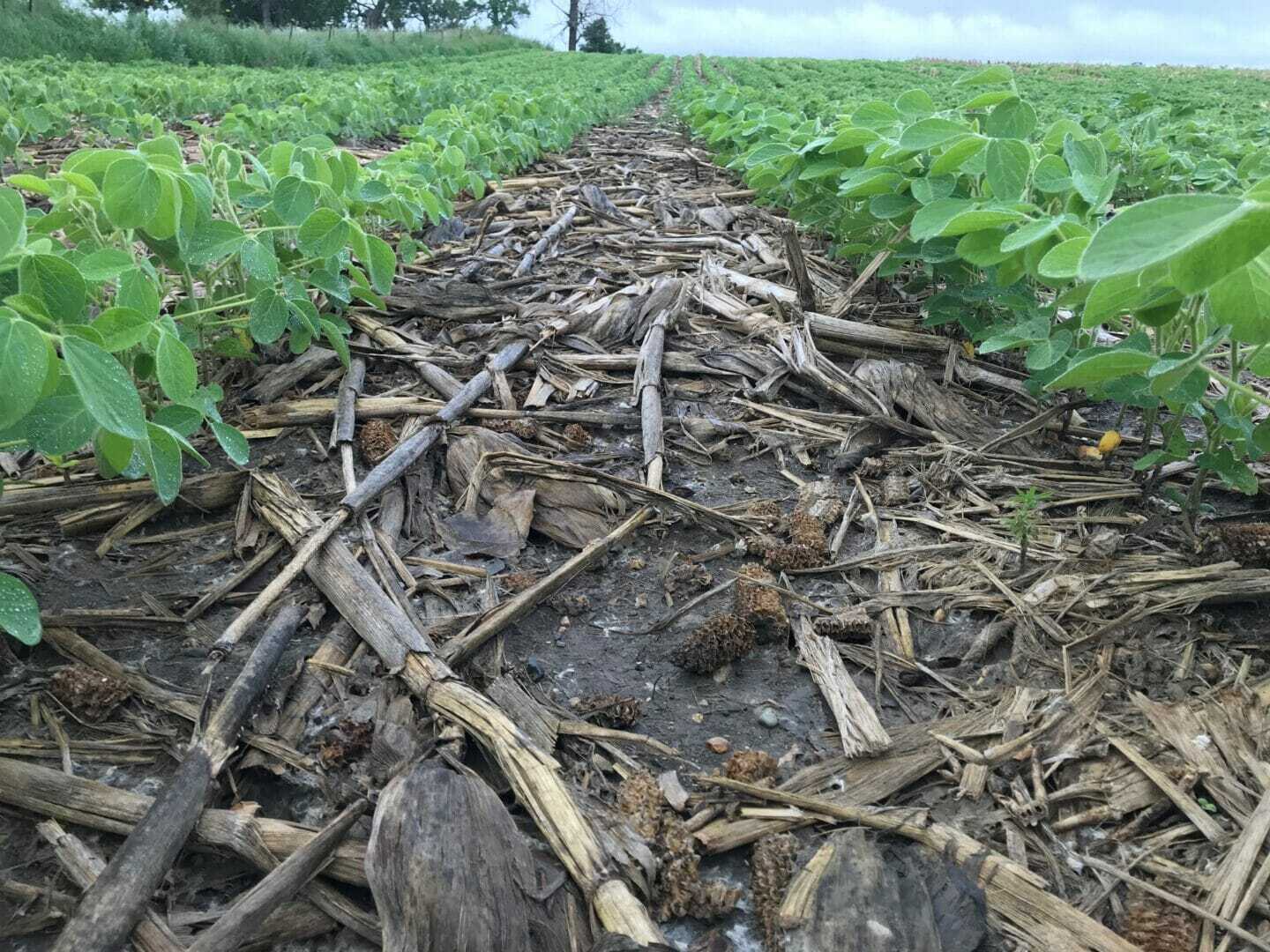
Soybean Product Manager, Mark Grundmeier, responds to frequently asked questions about post-emergence herbicide application and weed management.
Q: What tips do you have for farmers who are applying post-emerge herbicides?
A: Early season weed control is very important so that the crop can become well-established, but remember that haste makes waste! Double-check what type of seed you planted. Farmers today have a lot of options for seed products, from products that are resistant to either Roundup or Liberty to those that are resistant to both. It’s not uncommon to receive a call from someone who sprayed either Roundup on Liberty soybeans or Liberty herbicide on Roundup corn. No one likes to be out time or money, so just take an extra minute or two to double-check which traited products you have planted in each field before herbicide is applied.
Q: What weeds are you seeing in the fields right now?
A: We’re seeing a lot of water hemp, pigweed, as well as some winter annuals like marestail. In no-till fields we’re seeing a lot dandelions. Of course there’s always going to be the grasses like foxtail and large broad-leaf weeds showing up. It’s that time of year to get out in your fields and take a look for weeds!
Q: It seems like each year it gets harder and harder to control weeds; are there any steps farmers can take that will help?
A: There are 5 small steps farmers can take that will provide giant relief for weed control:
- Closely monitor known problem areas for tough-to-control weeds.
- Apply herbicides correctly. Follow the labels and guidelines, and remember that timing is critical.
- Don’t be satisfied with economic thresholds for weed control. Sometimes 85-95% isn’t enough; we need to fight weeds all season long.
- Clean equipment to prevent spreading to other fields.
- Surviving weeds must not be allowed to set seed. We need to get rid of as much as possible.
Q: How are farmers preventing herbicide resistance?
A: Rotating between herbicide traits is very important when fighting weed resistance. Especially with the newer traits becoming commercially available, especially in soybeans, we as a farming community need to be good stewards when handling this new technology.
Q: Is rotating crops a need or a benefit?
A: It’s best to be proactive in managing herbicide resistance before it becomes a problem. Rotating crops is a huge part of that, so is rotating the traits we’re using. We need to know what herbicides we’re using for what they do and don’t control, and what restrictions exist. Also be aware of the potential for crop injury. We have to get weeds out of fields before they get too large.
Q: How often do we need to be scouting?
A: Scouting should start right after emergence. Now is a great time to start monitoring fields weekly throughout the growing season for the most effective weed management practices. Be sure to take notes of what weeds are prevalent and where so that more informed decisions can be made for the 2017 growing season. Taking notes is critical.
If you have a question about what you’re seeing in the fields, feel free to ask! Send your questions via Twitter to @LathamSeeds, in a private message on Facebook or call our office at 1-877-GO-LATHAM (1.877.465.2842).
-
Latham Hi‑Tech Seeds
Late-Season Scouting Leads to Better Seed Decisions
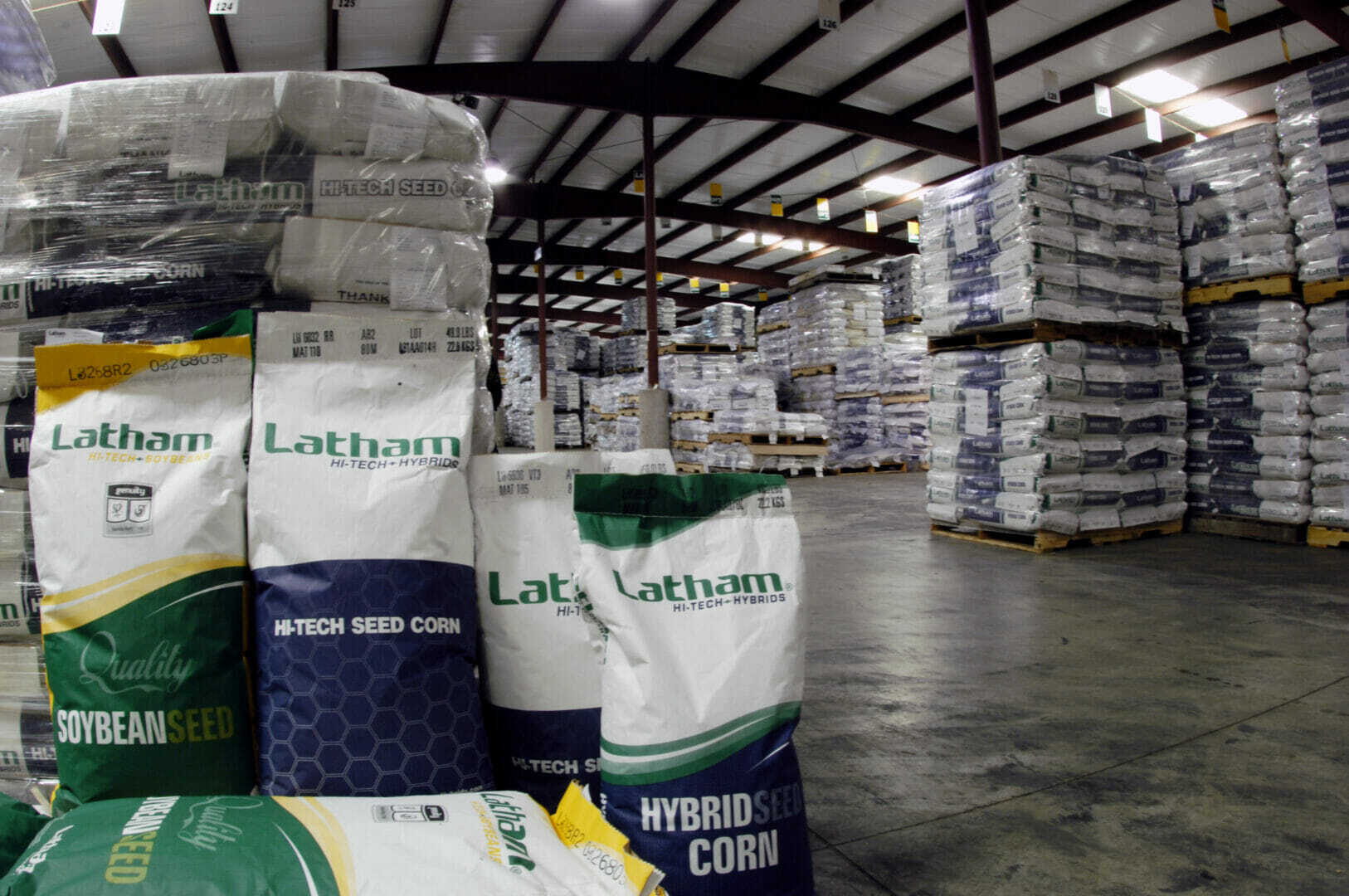
The effects of our wet, cold planting season continue to surface. If you drive through the country now, you’re likely to see Sudden Death Syndrome (SDS) and White Mold affecting soybean fields. You may find Northern Corn Leaf Blight and Goss’s Wilt in corn fields. You’ll also see a growing number of weedy fields.
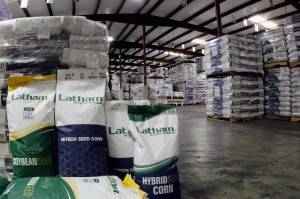 Seed selection is the key to effective management in all the above instances. Planting tolerant varieties, or avoiding very susceptible varieties, is the most effective way to reduce yield loss. Be sure you note the rating given to each product in a seed catalog before you select it for a particular field.
Seed selection is the key to effective management in all the above instances. Planting tolerant varieties, or avoiding very susceptible varieties, is the most effective way to reduce yield loss. Be sure you note the rating given to each product in a seed catalog before you select it for a particular field.Weeds also can be managed through careful seed selection.
This growing season we’ve had many farmers, like Mike Albertsen of western Iowa, seek out Latham Hi‑Tech Seeds for our strong lineup of LibertyLink soybeans. Due to increased weed pressure across the Upper Midwest, LibertyLink soybeans are in high demand for the 2016 planting season. It’s not too soon to place your order with Latham!
To help simplify your seed selection process, Latham Hi‑Tech Seeds designates some of its most defensive products as IRONCLAD™ Soybeans. These brands include exceptional genetics and industry-leading protective traits to win the battle against yield-robbing pests and disease. These products are selected for their “defensive” characteristics, but that doesn’t mean you’ll sacrifice yield. In fact, our results in the 2014 F.I.R.S.T. Trials shows how Latham’s IRONCLAD brands actually protect yield.
NOTE: Each Latham® soybean brand that receives the IRONCLAD distinction must be Soybean Cyst Nematode resistant and carry an Iron Deficiency Chlorosis rating of 2.2 or better. In addition, it must protect against either White Mold or Sudden Death Syndrome with a rating of 2.2 or higher. Plus, IRONCLAD products have strong defensive ratings against Phytophthora Root Rot and Brown Stem Rot.
We know that corn acres face their share of challenges, too. That why Latham brand hybrids with the GLADIATOR™ designation combine the industry’s top genetics and traits including a mandatory rootworm event. In our 2016 product guide, you’ll see that GLADIATOR hybrids with single modes of action against rootworm are denoted with a “G” distinction. Products with dual modes of action against root worm are denoted with a “2G.” If you’re planting corn-on-corn or you’re in an area with severe rootworm pressure, make these products part of your 2016 crop plan!
We take pride in working with our customers to help them select the seed products that will help maximize yields and increase profitability. If you have questions about what trait might be best for your fields, please send us an email or call 1-877-GO-LATHAM (1-877-465-2842).



